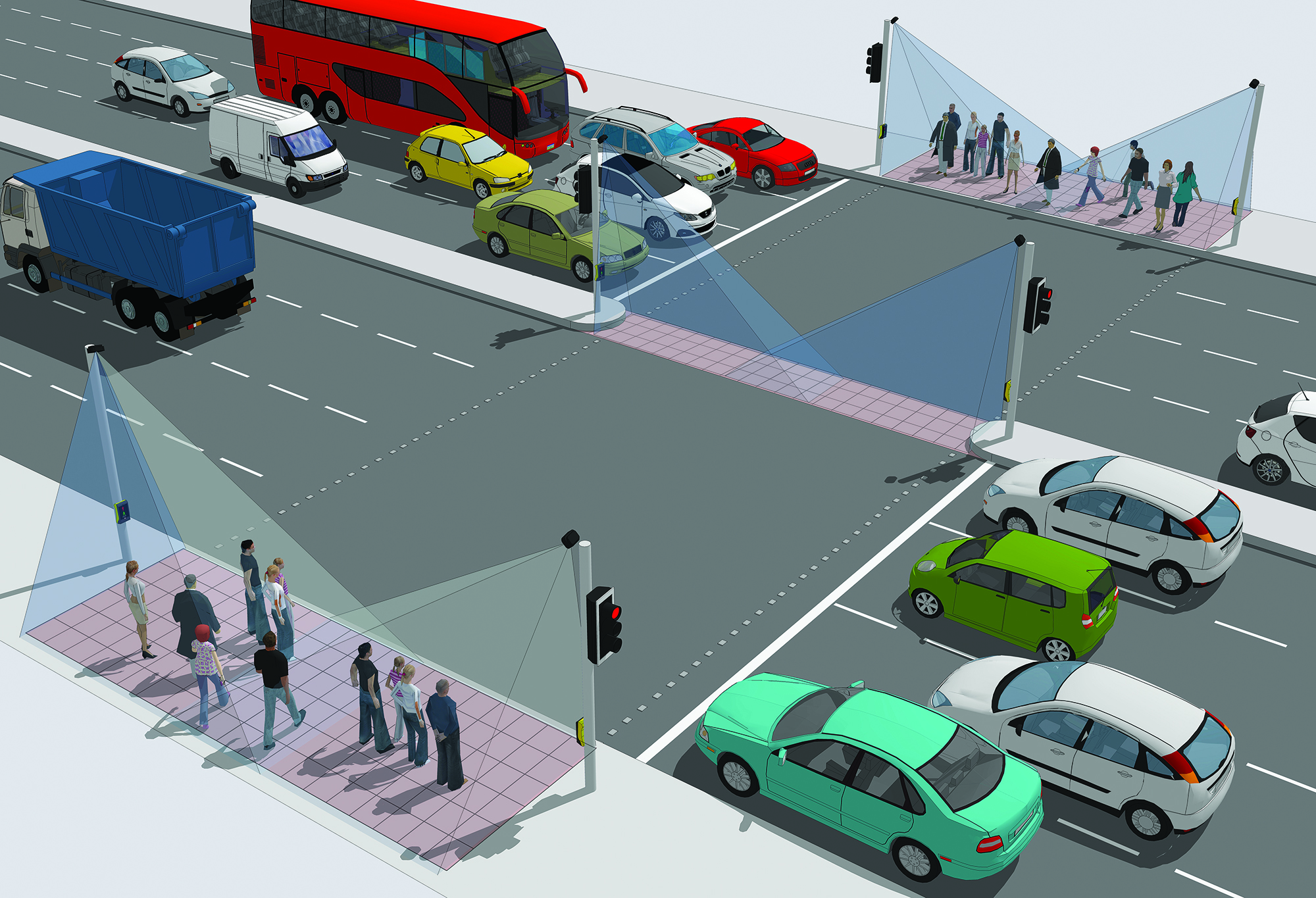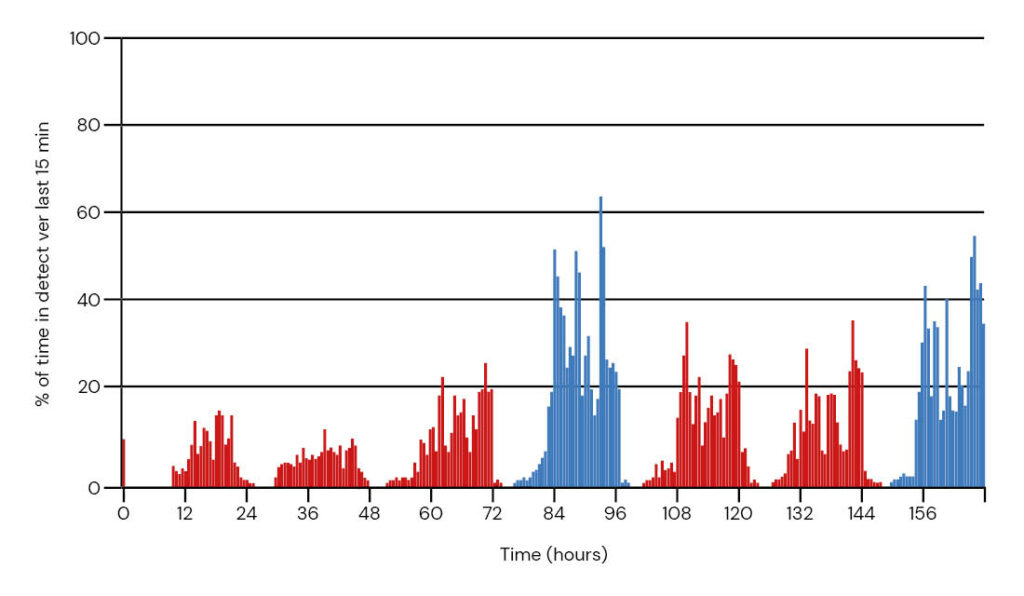
With two major sporting venues generating crowds of varying sizes, Nottinghamshire County Council needed a way to dynamically adjust pedestrian green time on a significant crossing outside Trent Bridge cricket ground. AGD’s 645 Pedestrian Detector, with volumetric capability, provided the solution.
Trent Bridge Cricket Ground, home of Nottinghamshire County Cricket Club and popular for Test, One-Day International and county cricket matches, is just across the river Trent from the city of Nottingham. During May and June 2019 Trent Bridge hosted the ICC World Cup 2019 with England, Australia, India, Pakistan, New Zealand, the West Indies and Bangladesh all visiting Nottingham during the competition. On the opposite side of Radcliffe Road is Nottingham Forest Football Club’s City Ground. These two sporting venues have crowd capacities of 17,500 and over 30,000 respectively, which means there are times when a lot of people are trying to cross the busy A6520 Radcliffe Road to get to and from matches.
With around 17,000 vehicles a day on Radcliffe Road outside the venues, it’s important to ensure the right balance between pedestrians and vehicles. “Traffic levels are high enough at normal peak times, and it is often difficult to prioritise pedestrian crossing times due to traffic congestion,” explains Chris Gough, traffic systems network manager at Via East Midlands (a company wholly owned by Nottinghamshire County Council to deliver a sustainable highways service for the county).
“During major sporting events like Nottingham Forest home matches and cricket matches at Trent Bridge, the volume of pedestrians vastly increases above normal levels. This heavier demand can cause significant delays for large numbers of pedestrians trying to cross during these events.”
Safety first
A build-up of pedestrians on the pavement can also sometimes lead to people trying to cross between cars and ignoring the signals.
Chris and his colleagues identified the pedestrian demand patterns associated with sporting fixtures: “When there’s a Nottingham Forest home match, footfall builds up from two hours before the match, drops to very low levels during the game then reaches a severe peak just after the game for around 20-30 minutes,” he says.
For the international cricket matches at Trent Bridge there also tends to be a steady build up of pedestrians a couple of hours before the start of play. “Footfall reduces during play, then peaks between sessions as people leave to visit local facilities – there’s a chip shop opposite the ground! Then, as you would expect, there is a severe peak just after stumps.”
7 Day View

Until now Nottinghamshire County Council’s highways team have been hard pressed to address the issue of fluctuating and often unpredictable pedestrian demand. “Without data on the volume of pedestrians wishing to use the crossing, it has not been possible to target the times when pedestrians should be afforded more priority.”
This is why the team was particularly interested to learn that AGD’s 645 Pedestrian Detector might be able to help. The 645 can be employed to vary the crossing times based on pedestrian density, creating more intelligent crossings that can detect the volume of people waiting and change the lights accordingly.
“We were hoping that the 645’s new volumetric detection would allow us to automatically provide additional pedestrian priority during busy pedestrian periods, without adversely affecting traffic flows during peak traffic volume,” explains Chris.
The AGD 645 monitors a 10m x 3m zone, with advanced optics that ensure accurate ‘detect and reject’, plus real-time video that can be fed to control rooms allowing remote zone adjustments to be made. Pedestrian behaviour is visible from the control room via Ethernet IP connectivity, delivering a richness of data that was previously unavailable, both day and night, with high reliability. This allows the local controller to make decisions in real time, so when the crowds subside, the signal phases can be easily and quickly returned to normal, giving back green time to the traffic.
The 645 is part of AGD’s comprehensive pedestrian product suite that embodies the company’s ethos of creating safer, greener, more efficient ITS solutions, complementing its on-crossing detection and award-winning nearside signals to ensure 24-hour pedestrian crossing safety.
Bowled over
Earlier this year, after a briefing on setup from AGD, a team of engineers from Via East Midlands installed and configured 645 detectors at Trent Bridge. “We adjusted the traffic light settings to provide two levels of pedestrian priority: level 1 gives extra green man time and extra all-red time when a large number of pedestrians are waiting to cross, and level 2 provides even more green man time and all-red time when a very large group of pedestrians are waiting.”
Chris and his colleagues are very pleased with the performance of the
AGD 645 detectors, which will remain at this site permanently. “We have
made some adjustments to the detectors’ volumetric settings since the
initial installation to ensure the best balance between pedestrian utility
and traffic congestion, and we’re really pleased with their performance,”
he concludes. “Going forward, we will use the 645 as a tool to solve
specific issues related to large fluctuations in pedestrian and/or cycle
flows at other sites within the county of Nottinghamshire, and wherever
required for our traffic signal design clients outside the county.

